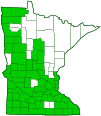silky aster
(Symphyotrichum sericeum)
Conservation • Description • Habitat • Ecology • Use • Distribution • Taxonomy
Conservation Status |
|
|||||||
| IUCN Red List | not listed |
|||||||
| NatureServe | N5? - Secure SNR - Unranked |
|||||||
| Minnesota | not listed |
|||||||
Description |
||
Silky aster is 8″ to 24″ tall, erect, perennial forb that rises on a cluster of 1 to 5 or more clustered stems from a short, woody, corm-like caudex or rhizome. The stems are erect, thin, wiry, brittle, grayish-to reddish-brown, and much branched above the middle. They are hairless or nearly hairless near the base and are densely covered with appressed, silky hairs toward the tip. Basal leaves are inversely lance-shaped, ⅝″ to 2″ long, and ⅛″ to ⅜″ wide. They are stalked, wedge-shaped at the base, and taper to a point at the tip with straight sides along the tip. There is 1 main vein and a network of smaller veins. The upper and lower surfaces are moderately to densely covered with long, silky hairs giving them a whitish- or grayish-green appearance. The margins are untoothed and have a fringe of silky hairs. Lower stem leaves are similar to basal leaves but stalkless. They do not clasp the stem at the base. They have a short, sharp, abrupt point at the tip. Basal and lower stem leaves are usually absent at flowering. Middle and upper stem leaves similar to lower stem leaves but lance-shaped, ⅜″ to 1 3 ⁄16″ long, 3 ⁄16″ to 5 ⁄16″ wide, and angled or rounded at the base. The inflorescence is an open, branched array (panicle) at the end of the stems and branches. The panicle has 1 to 5 or more short-stalked flower heads per panicle branch. The flower heads are ½″ to ¾″ in diameter. The bracts at the base of the flower head (involucre) is ¼″ to ⅜″ long and bell-shaped. They are arranged in 3 to 6 overlapping series. The outer series is egg-shaped, sharply pointed, and horizontally spreading. The middle series are bent backward. The inner series is linear and strongly ascending. There are 10 to 30, usually at least 15, rose-purple to deep purple ray florets and 15 to 35, usually at least 25, disk florets. The disk florets are pink at first, later turning purple. The fruit is a hairless, purple or brown achene with a tuft (pappus) of pale off-white or tan hairs attached. |
||
Height |
||
8″ to 24″ |
||
Flower Color |
||
Rose-purple to deep purple ray florets, pink disk florets |
||
Similar Species |
||
This is the only aster with leaves whitish-green due to a dense covering of silky hairs. |
||
Habitat |
||
Dry. Prairies. Full sun. |
||
Ecology |
||
Flowering |
||
August to October |
||
Pests and Diseases |
||
|
||
Use |
||
|
||
Distribution |
||||
|
Sources |
|||
| 6/13/2023 | ||||
Nativity |
||||
Native |
||||
Occurrence |
||||
Common |
||||
Taxonomy |
|||
| Kingdom | Plantae (Plants) | ||
| Subkingdom | Pteridobiotina | ||
| Phylum | Tracheophyta (Vascular Plants) | ||
| Class | Magnoliopsida (Dicots) | ||
Order |
Asterales (Sunflowers, Bellflowers, Fanflowers, and Allies) | ||
Family |
Asteraceae (Sunflowers, Daisies, Asters, and Allies) | ||
| Subfamily | Asteroideae | ||
| Supertribe | Asterodae | ||
| Tribe | Astereae (asters and allies) | ||
| Subtribe | Symphyotrichinae | ||
| Genus | Symphyotrichum (American asters) | ||
| Subgenus | Virgulus | ||
| Section | Concolores | ||
This and other asters were formerly place in the genus Aster. That genus was problematic, in that it did not include just one common ancestor with all of its lineal descendants and no others – it was not monophyletic. In 1994, the genus Symphyotrichum was resurrected to include most North American asters formerly in the genus Aster. |
|||
Subordinate Taxa |
|||
|
|||
Synonyms |
|||
Aster sericeus Aster sericeus var. sericeus Lasallea sericea Virgulus sericeus |
|||
Common Names |
|||
silky aster western silver aster western silverleaf aster western silvery aster |
|||
Glossary
Caudex
A short, thickened, woody, persistent enlargement of the stem, at or below ground level, used for water storage.
Clasping
Describing a leaf that wholly or partly surrounds the stem but does not fuse at the base.
Corm
A short, solid, vertical, thickened, underground stem that serves as a storage organ.
Involucre
A whorl of bracts beneath or surrounding a flower, flower head, or flower cluster.
Linear
Long, straight, and narrow, with more or less parallel sides, like a blade of grass.
Panicle
A pyramidal inflorescence with a main stem and branches. Flowers on the lower, longer branches mature earlier than those on the shorter, upper ones.
Pappus
The modified calyx composed of awns, scales, bristles, or feather-like hairs in plants of the Aster family such as thistles and dandelions.
Rhizome
A horizontal, usually underground stem. It serves as a reproductive structure, producing roots below and shoots above at the nodes.
Visitor Photos |
|||||
Share your photo of this plant. |
|||||
| This button not working for you? Simply email us at info@MinnesotaSeasons.com. Attach one or more photos and, if you like, a caption. |
|||||
Tom T. |
|||||
Silky Aster |
|||||
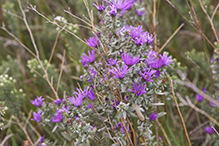 |
|||||
MinnesotaSeasons.com Photos |
|||||
Plant |
|||||
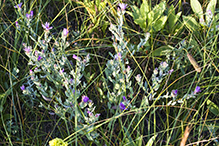 |
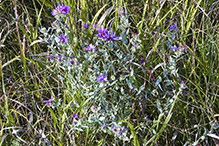 |
||||
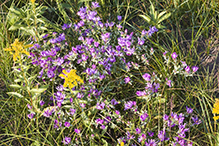 |
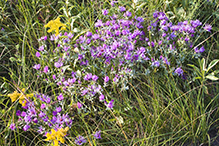 |
||||
Inflorescence |
|||||
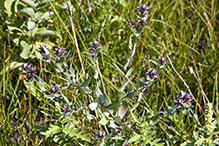 |
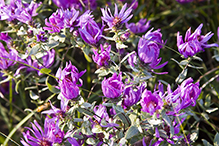 |
||||
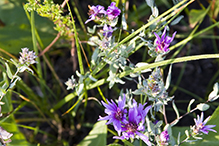 |
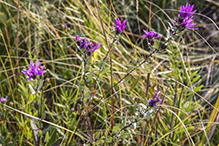 |
||||
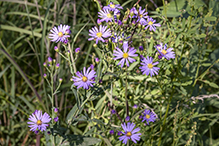 |
|||||
Flower |
|||||
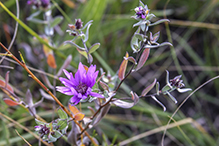 |
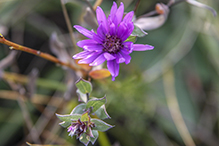 |
||||
Buds |
|||||
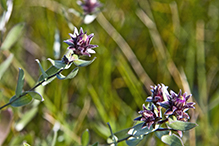 |
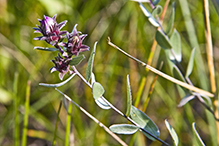 |
||||

Slideshows |
||

Visitor Videos |
|||
Share your video of this plant. |
|||
| This button not working for you? Simply email us at info@MinnesotaSeasons.com. Attach a video, a YouTube link, or a cloud storage link. |
|||
Other Videos |
|||


|
Created: Last Updated: © MinnesotaSeasons.com. All rights reserved. |
